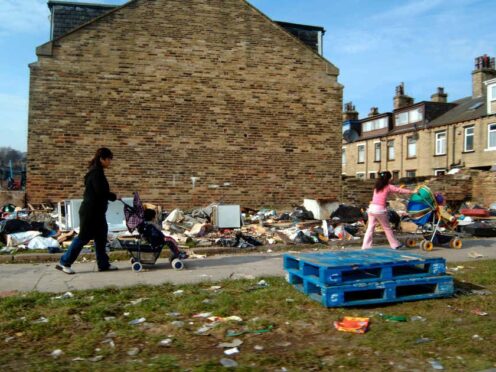The number of children affected by the two-child benefit cap will rise by a third over the next five years, the Institute for Fiscal Studies has warned.
The limit currently affects two million children, with more hit each year because it applies to those born after April 5 2017.
Next year, 250,000 more children will be affected, rising to 670,000 before the end of the next parliament if the policy is not reformed, according to the think tank.
Neither Labour nor the Conservatives have in their General Election manifestos vowed to scrap the Tory policy long-blamed for keeping children in poverty.
The cap, described as “cruel” by campaigners, was introduced in 2017 and restricts Child Tax Credit and Universal Credit to the first two children in most households.
When fully rolled out, it will affect one in five children, rising to 38% of those in the poorest fifth of households, the IFS research found.
It said that 43% of children in households with at least one person of Bangladeshi or Pakistani origin will be affected.
Affected households on average will lose £4,300 per year, representing 10% of their income, according to the analysis.
The introduction of the cap has helped drive up the share of children in large families who are in relative poverty from 35% in 2014-15 to 46% in 2022–23, a period when poverty for families with one or two children fell, the IFS said.
The research institute said removing the cost of the limit would cost the Government about £3.4 billion a year, roughly the same as freezing fuel duties for the next parliament.
IFS research economist Eduin Latimer said: “The two-child limit is one of the most significant welfare cuts since 2010 and, unlike many of those cuts, it becomes more important each year as it is rolled out to more families.”
Mubin Haq, chief executive of the abrdn Financial Fairness Trust, which funded the research, said: “The limit has been a significant contributor to child poverty amongst large families during a period when poverty for families with one or two children fell.
“If the next government is serious about tackling child poverty, it will need to review the two-child limit.
“There is an inherent unfairness in the policy as it affects only those children born after April 5 2017.
“The majority of families affected are in work or have caring responsibilities for disabled relatives or young children.”
Child Poverty Action Group chief executive Alison Garnham said: “Child poverty in the UK is a national disgrace and the biggest driver of it is the two-child limit. It makes life worse for kids up and down the country and limits their future chances.
“Children affected by child poverty don’t have a voice in this election but politicians from all parties have a responsibility to them to show leadership. Any government serious about making things better for the next generation will have to scrap the two-child limit, and do so quickly.”
Paul Carberry, chief executive at Action for Children, said: “Here is yet more shocking evidence of the huge scale of the damage being caused to children and families by the cruel two-child limit, which is well known to push families into poverty and, which if scrapped, would lift 300,000 children out of hardship.
“The election presents an opportunity for bold and ambitious action to be taken and for all political parties to commit to ending child poverty once and for all. That must include an increase to the child element of Universal Credit and scrapping the two-child limit and benefit cap.”
